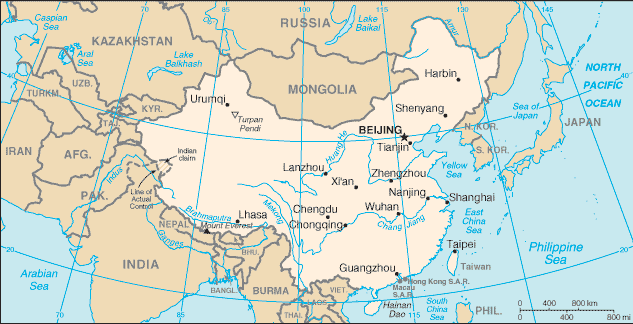The Health and Family Planning Commission of Guangdong Province has reported a human case of avian influenza A(H5N6) in a 26-year-old woman in Shenzhen today. The patient lives in Bao’an, Shenzhen. She is currently hospitalized for treatment and in a critical condition.
China has previously reported four human case of this strain of bird flu with two cases reported in 2014 HERE and HERE, and one case reported at the beginning of 2015. Three of the four cases have resulted in death.

Avian influenza is caused by those influenza viruses that mainly affect birds and poultry, such as chickens or ducks. Clinical presentation of avian influenza in humans includes eye infection (conjunctivitis), flu-like symptoms (e.g. fever, cough, sore throat, muscle aches) or severe respiratory illness (e.g. chest infection).
The incubation period ranges from 7 to 10 days. The more virulent forms can result in respiratory failure, multi-organ failure and even death. People mainly become infected with avian influenza through close contact with infected birds and poultry (live or dead) or their droppings. Human-to-human transmission is inefficient. People in close contact with poultry are more susceptible to contracting avian flu. The elderly, children and people with chronic illness have a higher risk of developing complications such as bronchitis and chest infection.
In September, the Food and Agricultural Organization of the United Nations (FAO) released a report concerning this avian flu virus calling it “worrisome” as a threat to birds.
Chinese authorities first reported the influenza A(H5N6) virus in poultry in April 2014. Since then, the Lao People’s Democratic Republic and Viet Nam have also detected the H5N6 virus in poultry.
Related: H5 Avian influenza rising in China
“Influenza viruses are constantly mixing and recombining to form new threats,” said FAO’s Chief Veterinary Officer, Juan Lubroth. “However, H5N6 is particularly worrisome, since it has been detected in several places so far from one another, and because it is so highly pathogenic, meaning infected poultry quickly become sick and, within 72 hours, death rates are very high.”


2 thoughts on “H5N6 avian influenza case reported in Shenzhen, China”